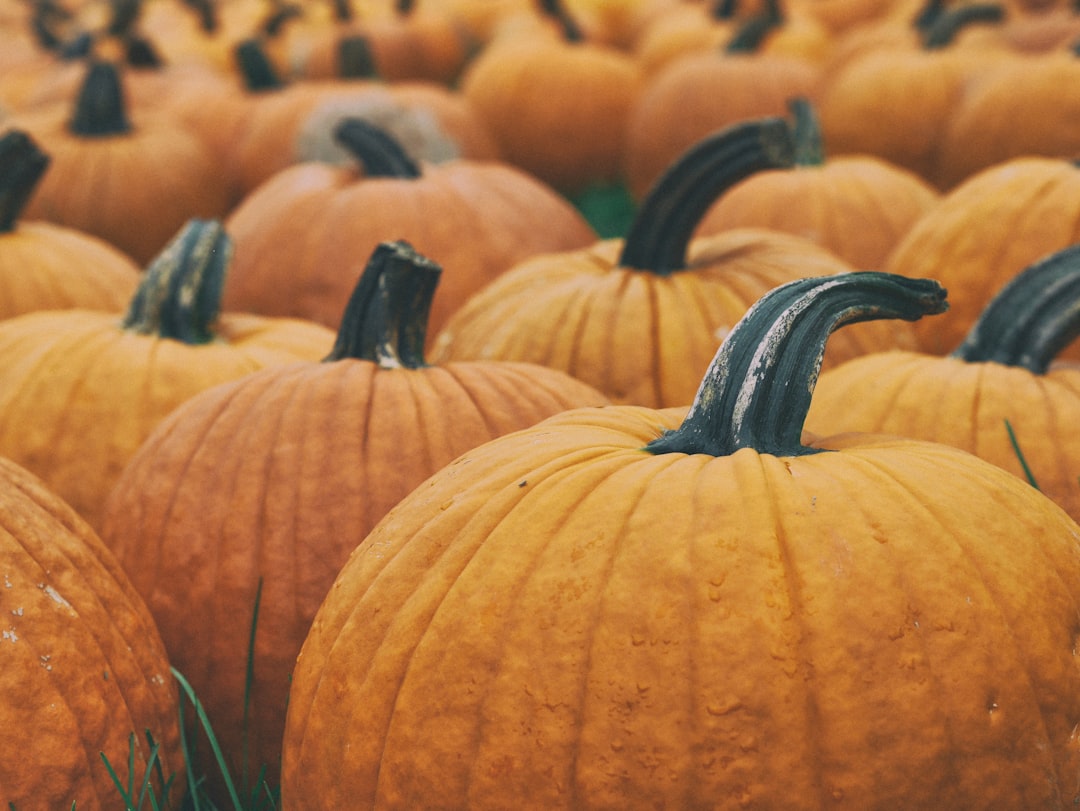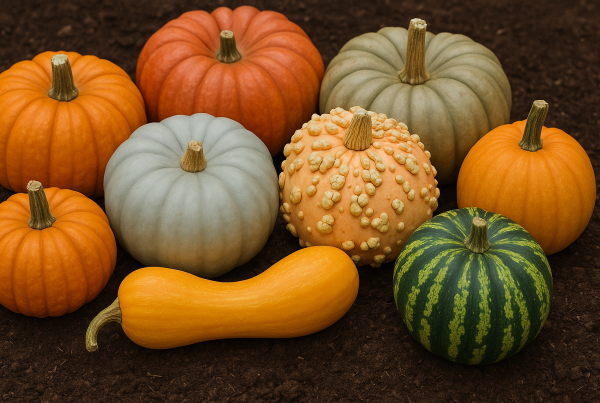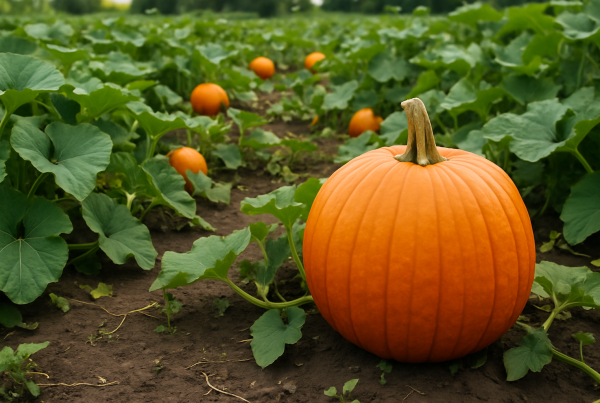The Ultimate Guide to Protecting Pumpkins: Expert Tips for UK Gardeners
Gardening enthusiasts in the UK who are keen to cultivate a bountiful pumpkin harvest will find that safeguarding their precious gourds from various threats is of utmost importance. Protecting pumpkins from common pests, fungal diseases, and unpredictable British weather can be quite the challenge, but with the right pumpkin care tips, it becomes an achievable task. Whether it’s preventing pesky slugs and aphids from devouring your plants, or shielding your pumpkins from the dampness that can lead to rot, understanding these essentials is crucial. Additionally, implementing natural wildlife deterrents and knowing how to properly store harvested pumpkins will ensure your crop remains healthy and vibrant. This ultimate guide will serve as your trusted companion, offering expert advice and sustainable practices that are both easy to implement and highly effective for keeping pumpkins thriving in your garden.
Common Pumpkin Pests
Protecting your pumpkins from pests is crucial for a successful harvest. This section will explore the most common pests that UK gardeners face and provide effective strategies for prevention and control.
Identifying and Preventing Slugs
Slugs are one of the most notorious pests in UK gardens, and pumpkins are no exception to their voracious appetites. These slimy creatures can cause significant damage to young plants and developing fruits.
Identifying slug damage is relatively straightforward. Look for irregular holes with smooth edges in leaves, stems, and fruits. You may also notice silvery trails on the soil or plant surfaces, a telltale sign of slug activity.
To prevent slug damage, consider the following strategies:
-
Create barriers around your pumpkin plants using copper tape or crushed eggshells.
-
Encourage natural predators like hedgehogs and birds by creating wildlife-friendly areas in your garden.
-
Use organic slug pellets sparingly, ensuring they’re pet and wildlife-safe.
For an eco-friendly approach, try setting up beer traps. Slugs are attracted to the yeast in beer and will fall into containers, unable to escape.
Tackling Aphids and Squash Bugs
Aphids and squash bugs can quickly become a significant problem for pumpkin growers. These sap-sucking insects weaken plants and can transmit harmful viruses.
Aphids are tiny, pear-shaped insects that cluster on the undersides of leaves and new growth. They come in various colours, including green, black, and pink. Squash bugs, on the other hand, are larger, shield-shaped insects that emit an unpleasant odour when crushed.
To control these pests:
-
Regularly inspect your plants, paying close attention to the undersides of leaves.
-
Use a strong jet of water to dislodge aphids from plants.
-
Introduce natural predators like ladybirds or lacewings to your garden.
For severe infestations, consider using insecticidal soaps or neem oil. Always follow the manufacturer’s instructions and apply in the evening to avoid harming beneficial insects.
Effective Pumpkin Pest Prevention
Prevention is key when it comes to protecting your pumpkins from pests. By implementing a few simple strategies, you can significantly reduce the risk of infestations.
Firstly, maintain good garden hygiene. Remove dead leaves and plant debris regularly, as these can harbour pests and diseases. Practise crop rotation to prevent pest populations from building up in the soil.
Secondly, encourage biodiversity in your garden. Plant companion plants like marigolds or nasturtiums near your pumpkins to repel pests naturally. These flowers also attract beneficial insects that prey on common pumpkin pests.
Lastly, consider using physical barriers such as row covers or netting to protect young plants. These can be particularly effective against flying insects and larger pests like birds or squirrels.
Protecting Against Diseases
Diseases can be just as devastating to pumpkin crops as pests. This section will focus on identifying, preventing, and managing common pumpkin diseases, with a particular emphasis on fungal issues and rot prevention.
Managing Fungal Diseases in Pumpkins
Fungal diseases are a common problem for pumpkin growers in the UK’s damp climate. Two of the most prevalent issues are powdery mildew and downy mildew.
Powdery mildew appears as a white, powdery coating on leaves and stems. It thrives in warm, dry conditions with high humidity. Downy mildew, on the other hand, manifests as yellow spots on the upper leaf surface with greyish-purple growth underneath. It prefers cool, wet conditions.
To manage these diseases:
-
Choose resistant varieties when selecting pumpkin seeds.
-
Ensure proper spacing between plants to improve air circulation.
-
Water at the base of plants in the morning to allow foliage to dry during the day.
For organic control, try a mixture of 1 part milk to 9 parts water, sprayed on leaves weekly. This can be effective against powdery mildew. For more severe cases, consider using a fungicide approved for use on edible plants.
Preventing Pumpkin Rot
Pumpkin rot can quickly ruin your harvest, especially in wet conditions. The two main types of rot to watch out for are blossom end rot and fruit rot.
Blossom end rot is caused by calcium deficiency and appears as a dark, sunken area at the bottom of the fruit. To prevent this:
-
Ensure consistent watering, especially during fruit development.
-
Add calcium-rich amendments like crushed eggshells to your soil.
-
Avoid over-fertilising with nitrogen, which can interfere with calcium uptake.
Fruit rot is often caused by fungi and is more common in wet conditions. To prevent this:
-
Elevate fruits off the ground using straw or cardboard.
-
Remove any damaged or diseased fruits promptly.
-
Avoid wetting the fruits when watering.
Regular inspections of your pumpkin patch can help you catch and address any signs of rot early, potentially saving your harvest.
Weather and Wildlife Protection
The UK’s unpredictable weather and diverse wildlife can pose significant challenges to pumpkin growers. This section will explore strategies for protecting your pumpkins from extreme weather conditions and deterring wildlife without harming the local ecosystem.
Shielding Pumpkins from Extreme Weather
Pumpkins are surprisingly resilient, but extreme weather events can still cause significant damage. In the UK, the main concerns are typically excessive rainfall, unexpected frosts, and occasional heatwaves.
To protect against heavy rain:
-
Ensure good drainage in your pumpkin patch by adding organic matter to the soil.
-
Consider using raised beds or mounds to prevent waterlogging.
-
Use cloches or mini polytunnels to shield young plants from heavy downpours.
For frost protection:
-
Keep an eye on weather forecasts, especially in early spring and late autumn.
-
Cover plants with horticultural fleece or old bedsheets when frost is expected.
-
Remove covers during the day to allow for pollination and prevent overheating.
During heatwaves, provide extra water and consider using shade cloth to prevent scorching. Mulching around plants can also help retain moisture and keep roots cool.
Natural Wildlife Deterrents for Pumpkins
While wildlife is an essential part of any garden ecosystem, some animals can cause significant damage to pumpkin plants. Common culprits in the UK include birds, squirrels, and deer.
To deter birds:
-
Use reflective tape or old CDs hung near your pumpkin patch.
-
Install a scarecrow or bird-scaring kite.
-
Consider netting for smaller areas, ensuring it’s secured properly to prevent trapping wildlife.
For ground-based pests like squirrels:
-
Sprinkle coffee grounds or crushed garlic around your plants.
-
Use motion-activated sprinklers to startle animals.
-
Plant strong-smelling herbs like mint or lavender near your pumpkins.
If deer are a problem in your area, consider installing a tall fence around your vegetable garden. Alternatively, try hanging bars of strongly scented soap near your pumpkin patch, as the smell can deter deer.
Remember, the goal is to deter wildlife, not harm it. Always opt for humane methods that protect your pumpkins while respecting the local ecosystem.









